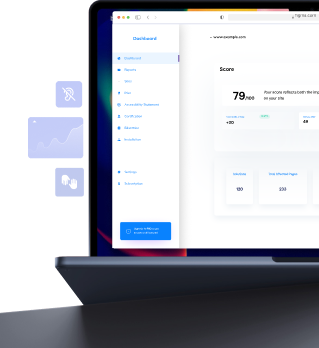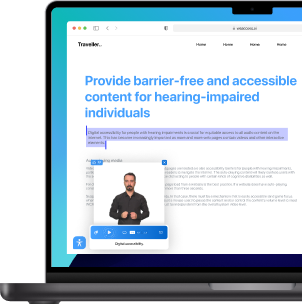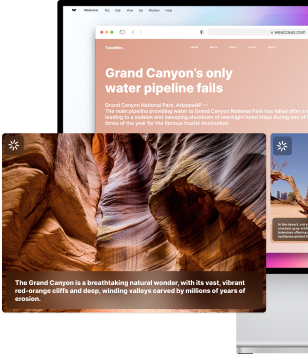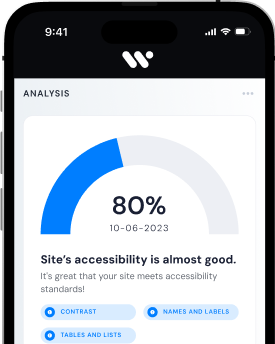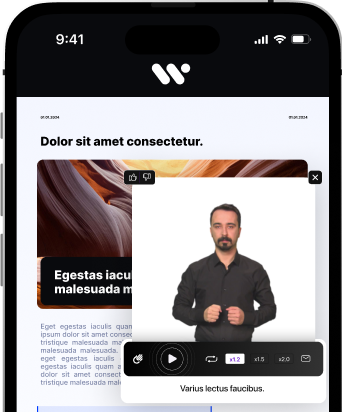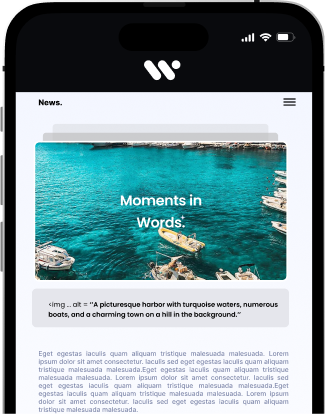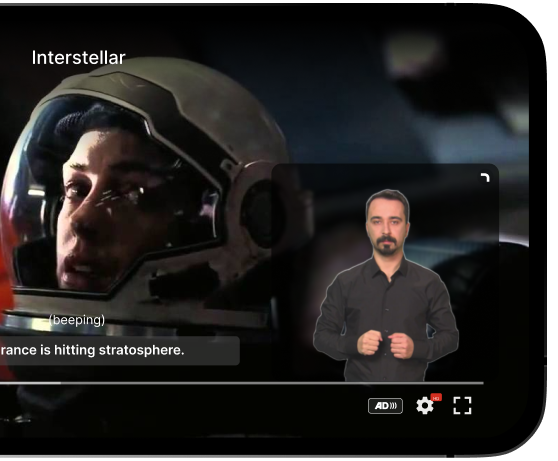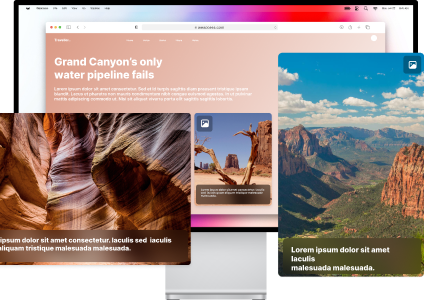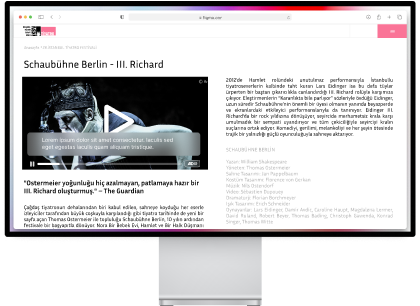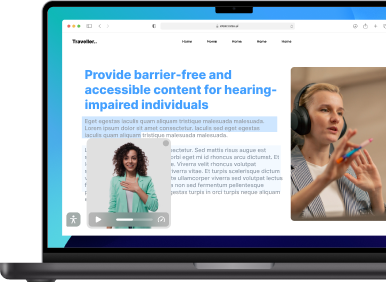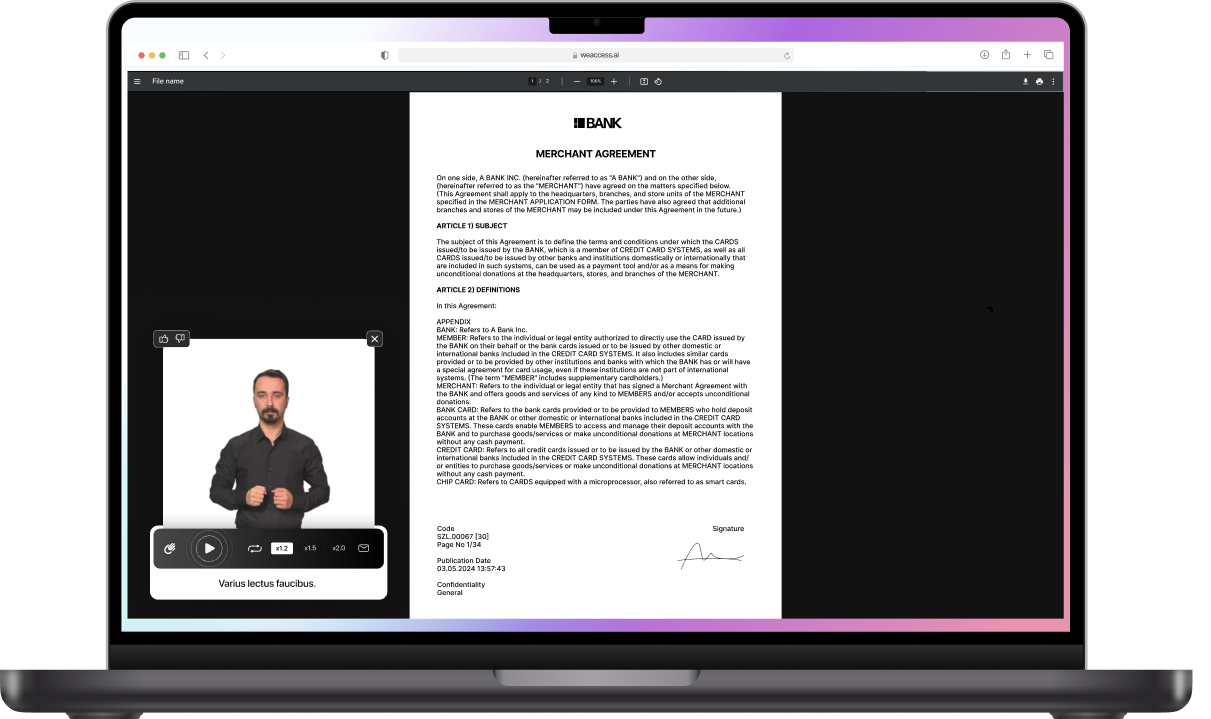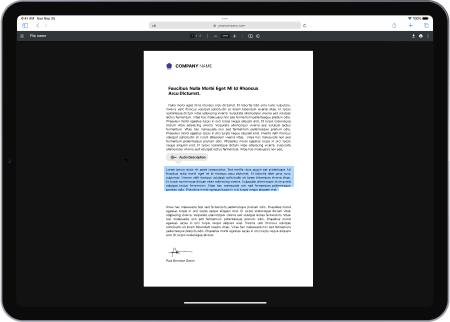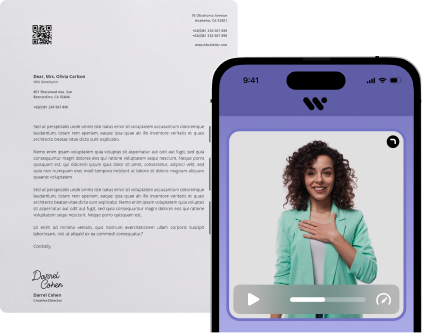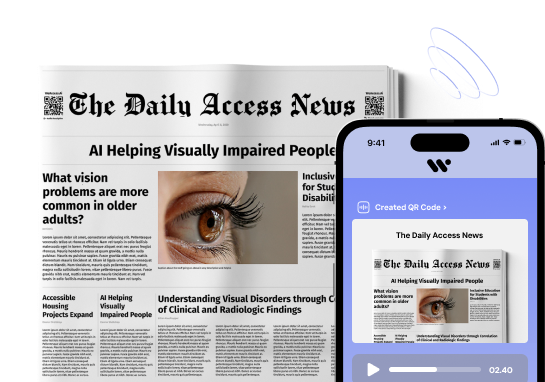Artificial Intelligence Supported Digital Accessibility for Visually Impaired
The development of technology is very important, but when it covers everyone. You might think, a product I developed, a service or web page that I put into use, doesn't it cover everyone anyway? Yes, it may seem like that, or rather, the answer to this question is directly related to how you approach the word “ inclusiveness ”. For example, have you ever thought about whether your website or mobile app is available to a visually impaired individual? Yes, if you think, you are really looking deeper into the term “ inclusiveness ” .
You can also ask the following questions, how many visually impaired users visit my website, what if I offer an inclusive experience for them? Or do I have to do this? In this article, we will tell you how important digital accessibility can be for your company and brand. In this way, you will find very satisfying answers to both these questions and other questions that you are curious about. Moreover, if you decide to offer a more accessible experience for your website, we will transfer you an easy method of doing this with WeAccess.Ai.
If you wish now, why should our website be accessible? Let's answer for the reasons for his question.
Improving User Experience for the Visually Impaired
It is very important to offer them a website usage experience that is fully compatible with both mobile and desktop screen readers when a Visually impaired visitor is visited on your website. Offering various contrast options for low-seeing individuals will further increase the level of accessibility.
If you complete accessibility work on your website correctly, all visually impaired users, regardless of the device and operating system, will be able to navigate your website comfortably, depending on the category your website serves, will be able to review and purchase the products you exhibit. There are millions of visually impaired people who can access technology in Turkey and the world, if you make it a part of the user experience process for your website and mobile application in accessibility, you get the opportunity to reach thousands of different customers.
Let's say you have an e-commerce platform and your website that you access users is not accessible to the visually impaired. It offers competitive prices in the industry and therefore you think you are likely to be preferred, but you have not included accessibility in the user experience design process. This will take away visually impaired consumers who want to buy the product they want at a more affordable price.
However, if you work to improve the user experience for the visually impaired and provide accessibility to your web site and mobile applications, you will get more potential customers.
Visually Impaired Users Right to Access Information and Digital Content
All products and services should be designed with every group in the community in mind. Just as an ordinary person can access the information he wishes, as he wishes, a visually impaired individual should also easily access the information he wishes. Access to information is the right of visually impaired individuals as well as all individuals.
All companies can contribute to the protection of the right of visually impaired users to access information and digital content by paying attention to their accessibility processes in the applications and websites they design.
Visually impaired people in accessing printed materials still have significant problems despite the various technologies developing, and in this case individuals do research on a topic they are curious about, school is turning to digital resources and websites for gathering information for homework work and for various other purposes. It is very important that individuals have a cleaner experience while researching and learning something on the internet, have quick access to what they are looking for and benefit from this information, and it is their most natural right. You can also contribute to the protection of this right by providing an accessible experience on your website and mobile applications.
Accessibility Standards and Legal Obligations
Some standards have been set so that web site accessibility can be implemented more easily and it is easier to understand whether any website is accessible. In addition, some countries legally enforce web accessibility and enforce various sanctions on web site owners who do not meet legal requirements. States, on the other hand, often see and support such work as part of social responsibility awareness. Whether legal requirements are met is determined according to the accessibility standards established by countries, mostly determined according to WCAG 2.1’. Now let's talk a little bit about the standard and legal requirements that often form the basis of legal regulations in this regard. These will allow you to understand why you should pay attention to web accessibility on an international scale.
WCAG 2.1 Web Accessibility Standard
WCAG (Web Content Accessibility Guidelines – Web Content Accessibility Guidelines ) is the most comprehensive application in the world that explains how websites will be accessible. WCAG is developed by the W3 platform. WCAG has identified important solutions for the accessibility of websites since its first publication in 1999. Continuing its continuous development process, WCAG has included some important improvements with WCAG 2.1. Web Content Accessibility Guidelines (WCAG) 2.1 covers a wide range of recommendations to make Web content more accessible.
These include how a website should be structured for people with low vision or visually impaired, hearing impaired, speech impaired and photosensitivity. WCAG 2.1 guidelines are a standard created based on the accessibility of web content on desktop, laptop and mobile devices.
If your website fully complies with WCAG 2.1 standards, your website will become more accessible not only for visually impaired individuals but for all disabled individuals.
In addition to the standards set by WCAG 2.1, W3 published WIEK 2.0’ (Web Content Accessibility Guide Rules ) in 2008, which includes the rules on how these instructions should be implemented. Both WCAG and WIEK documents contain every detail needed on how a website's accessibility will be.
Americans with Disabilities Act (ADA)
The Americans with Disabilities Act is a legal regulation that addresses the rights of people with disabilities living in the USA, including legal requirements for accessibility. This law was created when the Rehabilitation Law, which came into force in the country in 1973, could not meet the requirements of the period over time.
The second article of the Americans with Disabilities Act explicitly prohibits discrimination against people due to their physical disabilities. It also includes regulations on the accessibility of websites and digital content.
Suppose you have a global company and serve in the USA. Failure to provide comfortable access to the products you sell or the services you offer using your website may leave you alone with legal obligations. In other words, ( ADA ) Americans with Disabilities Act can be met with response because your website does not meet web accessibility requirements, and as a result you may encounter legal processes. For ADA compatibility, you should make sure that all pages on your site are correctly coded and accessible according to WCAG 2. ’. According to the Americans with Disabilities Act, compliance with web accessibility standards is under the control of the federal judiciary. Under the law, all public sector organizations and commercial facilities should design their websites according to WIEK 2.0 requirements.
In addition, private sector organizations receiving funds from the federal must comply with the digital accessibility criteria.
Companies that have been found to meet WCAG 2.1 or WIEK 2.0 criteria in the U.S. or have been sued by users with disabilities for digital accessibility issues may be fined, and even if the firm is on the accused side, may have to pay compensation to the other party.
EU Web Accessibility Act
Of course, the only country that sets legal regulations on digital accessibility is not the USA. The European Union also has an important legal regulation on web accessibility.
The European Union web accessibility regulation is committed to the accessibility of all websites linked to the public sector and governments. In addition, mobile applications related to them are being developed in accordance with WCAG 2.1 standards.
However, if they do not directly serve people with disabilities, NGOs, schools and public service broadcasters are exempted from the digital accessibility regulation in question.
If the European Accessibility Act (EAA), in which the EU generally addresses all accessibility criteria, it appears as an arrangement applicable to private sector organizations that offer services or commercial products to consumers in EU countries. But the EU Web Accessibility Act and the European Accessibility Act do not contain strict standards for everything, so every EU member country has the right to reinterpret this directive in the best way they see fit.
Accessible Canadian Law
Canada is another country that offers legal requirements for digital accessibility. The Accessible Canadian Law is regulated to make access to electronic and information technologies seamless for people with disabilities. But in Canada, there is a separate regulation called OADA for web accessibility and expects companies and non-profit organizations to provide accessibility features that are appropriate for WCAG 2.0 AA level on their websites and mobile applications.
Enabling a Wider Audience in terms of your business
As we mentioned earlier, providing an accessible experience for visually impaired individuals on your website allows you to reach a wider audience. Turkey and the world have online groups that share the experience they have gained on various topics of all disabled individuals. This move will allow you to get out of your competitors, especially if you have a new initiative and show that you care not only for the visually impaired but for all the disabled, by offering them an accessible website and mobile app usage experience.
On the contrary, if you do not pay due attention to digital accessibility, this will lead to a visually impaired visitor or customer candidate who discovered you to share the negative experience with other people. This can not only drive people away from your website or mobile app for that moment, but also cause people who are considering using your app or visiting your website in the future. As a result, you need to work harder in the future to win those customers.
You need to care about even the smallest customer group to achieve your business goals. Therefore, when creating your project, paying attention to many issues, including accessibility, will make it easier for you to find new customers. It also reproduces as “ shares information ” as a requirement of the word, anyone who has a nice digital experience on your platform will recommend you to the environment, this environment covers not only disabled users but everyone in general.
Increasing Brand Reputation
Another advantage of providing digital accessibility on your website is that it will increase your brand reputation. How can accessibility increase brand reputation? You might think, so let's take a look at this.
You can use your website or mobile app to be accessible for a visually impaired individual in the promotional and marketing work of your brand, products and services. Showing the society that you care about people with disabilities will attract people's attention because people like brands to care for disabled or older individuals. Conscious people adopt work for people with disabilities, and this makes it easier for them to connect emotionally with your brand. This increases brand reputation.
There are also several local and international programs that reward accessibility for both visually impaired and other disability groups. You can participate in these reward programs when you provide accessibility for everyone on your website. In addition, there are various user experience reward programs that take accessibility as an evaluation criterion. Receiving awards from such programs will contribute to increasing your brand reputation.
Telling people how you offer an accessible experience is also an important step towards increasing brand reputation. However, all these studies should be carried out within the framework of ethical rules and avoiding giving false information to people by taking advantage of their sensitivity in this regard. Before using the accessibility element for marketing purposes in advertisements, you should make sure that your brand's website or mobile app is truly accessible.
Sensitivity and Social Responsibility
Improving brand reputation, caring about user experience, or meeting legal obligations... all of these can be important for providing an accessible experience on your website or mobile app. But there's something more important than all of that: sensitivity and social responsibility. If you see providing an accessible digital experience as a purely commercial policy, you won't realize how important it is, and your accessibility policies will be temporary. But you should care about accessibility not because it saves the day, but because you realize that it matters to every internet user. You should make accessibility part of the user experience design process and incorporate it into your regular workflow.
When a visually impaired user informs your company that there is an accessibility issue with the website, you should include a user representative on your team who will actually inform them about it. You should interpret user feedback not as interference, but as an opportunity to help you and provide a better experience. You should see accessibility and outreach not as a job, but as a social responsibility. If you pay attention to all of these things, then you will open the door to providing a truly accessible experience across all your platforms.
How Can We Provide an Accessible Experience for the Visually Impaired on Our Website?
How do we provide an accessible experience for visually impaired visitors on a website? First of all, you might want to find out how accessible your website currently is. Here, the "WeAnalyse" tool from WeAccess.Ai can help you.
WeAnalyse analyzes how accessible your website is, in addition to scanning your site for accessibility issues, which sections are experiencing these issues, and much more to provide you with a detailed report. If you are curious about the accessibility status of your website with weanalyse. Click for a free one-page analysis
WeTool's artificial intelligence helps you solve problems on your website, and if you integrate it into your website, it will solve all the problems for you. This way, you don't have to do anything and you can easily start providing an accessible experience on your website.
If you've made any changes to your website that could affect accessibility (such as a theme change or a line of code change), there's no problem because WeTool regularly scans your site and automatically fixes any issues it finds.
If you are worried that WeTool is doing something wrong, again, no problem, you can configure WeTool in any way you like. You can contact us for more information about our service. See you in our next content.

